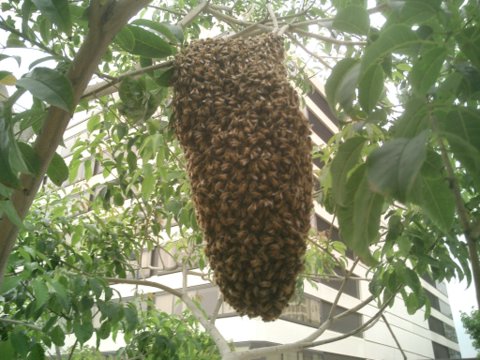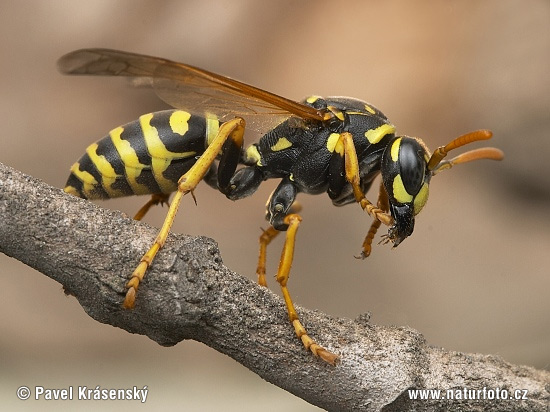The Africanized Honeybee, also known as the "killer bee" lives in South America and the Western and Southern United States. They have been known to chase people for over a quarter of a mile once they get excited and aggressive.
Even though they are called "Killer" bees, their venom is no more dangerous than regular honeybees. Their attacks are more harmful because they tend to attack in greater numbers, increasing your chance of having a severe allergic reaction to the venom released when they sting you.
Thursday, September 30, 2010
Wednesday, September 29, 2010
Carpenter Bees.
One of the bees I hate the most is the carpenter bee.
Carpenter bees are solitary bees. They build nests just for themselves and only feed their own young. They get their name from their ability to drill through wood. Carpenter bee stingers are not barbed, so they are able to sting over and over again.
Carpenter bees are solitary bees. They build nests just for themselves and only feed their own young. They get their name from their ability to drill through wood. Carpenter bee stingers are not barbed, so they are able to sting over and over again.
I hate some bugs....
So today as I was washing my hands, an earwig fell off the towel and into my sink. I let it go down the drain of course. If you don't know what an earwig is, here's a picture.
In the summer, my house was infested with earwigs and I guess they plan on staying for the winter. Bleach and water is loaded into a spray bottle and I'm prepared to spray my whole house down.
Wasps
The type of nest produced by wasps can depend on the species and location. Many social wasps produce paper pulp nests on trees, in attics, holes in the ground or other such sheltered areas with access to the outdoors. By contrast solitary wasps are generally parasitic or predatory and only the latter build nests at all. Unlike honey bees, wasps have no wax producing glands. Many instead create a paper-like substance primarily from wood pulp.
Tuesday, September 28, 2010
Bumble Bees
Bumblebee nests are first constructed by over-wintered queens in the spring (in temperate areas). Upon emerging from hibernation, the queen collects pollen and nectar from flowers and searches for a suitable nest site. The characteristics of the nest site vary among bumblebee species, with some species preferring to nest in underground holes and others in tussock grass or directly on the ground. Once the queen has found a site, she prepares wax pots to store food, and wax cells into which eggs are laid.
Monday, September 27, 2010
First Post
This is my first post, lets see how these go. I'll try to post daily!
Ill do a bee a day with a random fact, if I run out of bees Ill post more in depth information another day
HONEY BEES
All honey bees live in colonies where the worker bees will sting intruders as a form of defense, and alarmed bees will release a pheromone that stimulates the attack response in other bees.
Ill do a bee a day with a random fact, if I run out of bees Ill post more in depth information another day
HONEY BEES
All honey bees live in colonies where the worker bees will sting intruders as a form of defense, and alarmed bees will release a pheromone that stimulates the attack response in other bees.
Subscribe to:
Posts (Atom)






